Researchers Warn on Eutrophication Potential of Ammonia

Switching to ammonia as a marine fuel could create new problems, according to a new study undertaken by researchers from Chalmers University of Technology in Sweden.The researchers carried out life cycle analyses for batteries and for three electro-fuels (hydrogen, methanol and ammonia). Eutrophication and acidification are some of the environmental problems that can be traced to the use of ammonia – as well as emissions of laughing gas (N2O), which is a very potent greenhouse gas.Ammonia (NH3) is a carbon-free fuel and has the advantage of a higher energy density than, for example, hydrogen.
AI-Based Semi-Autonomous Voyage Planning System Tested
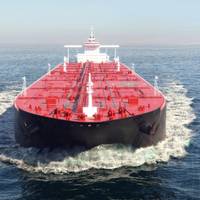
Yara Marine Technologies, artificial intelligence (AI) application developers Molflow, Chalmers University of Technology and social science specialists from Halmstad University and Gothenburg University have collaborated over three years to develop and trial an AI-based semi-autonomous voyage planning system.Initiated in August 2020, the Via Kaizen project explores how AI and machine learning can enable more energy-efficient voyage planning for ship operators. The project demonstrated…
Call for Stricter Regulation of Scrubber Washwater

The combined emissions of metals and other environmentally hazardous substances from ships is putting the marine environment at risk according to a new study from Chalmers University of Technology, Sweden.The researchers calculated the contaminant load from these emissions into the marine environment in four ports, and found that water discharged from ships’ scrubbers accounts for most of the contaminants.“The results speak for themselves. Stricter regulation of discharge water from scrubbers is crucial to reduce the deterioration of the marine environment…
New Design Reduces Aerodynamic Drag of Ship Superstructure
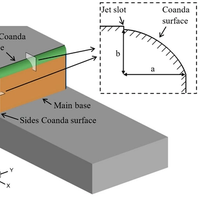
A research team at Chalmers University of Technology, Sweden, has demonstrated a unique method that can reduce the aerodynamic resistance of ships by 7.5%.Central to the method is the steady flow Coanda effect - the tendency of a fluid to flow – like water down the back of a spoon – along a convex surface instead of launching away from it.In shipping, one of the main sources of aerodynamic drag is the square-shaped back of the ship’s superstructure, and the new method developed…
Via Kaizen Project Aims to Deliver AI-powered Ship Ops Support System
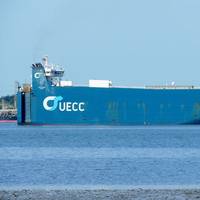
A group of Swedish technology entrepreneurs and academics joined forces to accelerate the research and development of an AI-based, semi-autonomous system for planning and executing more energy efficient sea voyages.Leading the effort is Lean Marine, aiming to deliver a ground-breaking R&D project to accelerate the tech development, realization, and adoption of AI-powered ship operation support technology by ship crew and management. The Via Kaizen project is funded by the Swedish Transport Administration…
Lean Marine Names Persson Sales Director
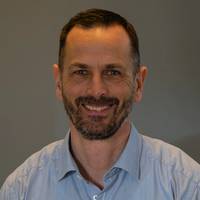
Swedish ship propulsion optimization and performance monitoring experts Lean Marine Sweden AB have appointed Jonas Persson to the role of Sales Director.In this position, Persson will hold overall responsibility for the expansion of the customer base for the automated propulsion optimization system FuelOpt and the smart performance management and reporting software Fleet Analytics worldwide, in addition to supporting Lean Marine’s existing customer network. He will also be responsible…
LADAR: Laser Sensor Technology for the Maritime Industry
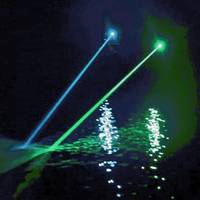
Research scientist and entrepreneur Sverre Dokken believes laser-based remote sensing has big potential in the maritime domain. But what is LADAR, who’s it for and what are the key benefits?“Our mission is to be the world leader in innovative maritime sensor products that enhance the safety and security of shipping and all manner of offshore activity,” says Ladar Ltd (LDR) principal Sverre Dokken.In the sensor vanguardEssentially a laser-based navigational aid, LADAR (Laser Detection and Ranging) combines long-distance object detection with high-accuracy measurement…
WASP Sets Sail on its 3-Year Voyage
The WASP (Wind Assisted Ship Propulsion) project, funded by the Interreg North Sea Europe program, part of the European Regional Development Fund (ERDF) to the tune of €3.4 million has been officially approved and launched.The project brings together universities, wind-assist technology providers with ship owners to research, trial and validate the operational performance of a selection of wind propulsion solutions thus enabling wind propulsion technology market penetration and contributing to a greener North Sea transport system through harvesting the regions abundant wind potential.This fully aligns with the wider programs’ objective of promoting the development and adoption of products…
Volvo Penta, ABB, Chalmers Collaborate on Fast Charging-at-Sea
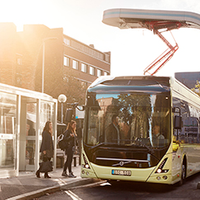
Volvo Penta has announced that it is to complete a feasibility study together with ABB in Sweden and Chalmers University of Technology in Gothenburg to evaluate technology concepts that can meet the challenge of providing fast charging of electric vessels.“While all-electric boating remains in its infancy, for this exciting new transport system to be a success and grow, a network of fast charging stations needs to be developed,” says Niklas Thulin, Director Electromobility, Volvo Penta.
Netherland Hosts International Simulation-based Training Conference
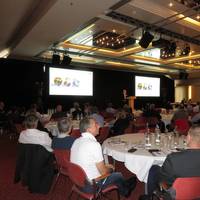
Almost 200 delegates from across the world are gathered at the Grand Hotel Amrâth Kurhaus in Den Haag, The Netherlands this week to hear about the latest developments in maritime training based on state-of-the-art simulation technology. Kongsberg Group, the Norway-headquartered international knowledge-based company serving businesses in the maritime, defense, remote weapons and digitalization sectors, is hosting the three-day Kongsberg UC2017 International Maritime Simulation User Conference designed to bring attendees up to date on recent and planned developments in digitalization…
EU Project Aims to Improve Arctic Shipping Safety
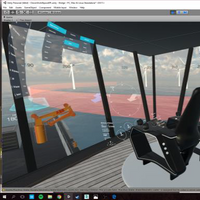
A three-year, €6.5 million ($7.7 million) research project has been launched to address safety and efficiency in Arctic ship operations. Funded by the EU’s Horizon 2020 program, SEDNA sets out to develop a risk-based approach to Arctic navigation, ship design and maritime operations. Recent years have seen a rapid increase in shipping operations in Arctic regions, as ice cover has reduced due to global warming. While this offers the potential to save significantly on voyage times…
European e-Navigation Solutions Tested for Human Factors
The EU funded EfficienSea2 project, which aims to implement innovative and smart solutions to increase efficient, safe and sustainable traffic at sea, has finished a full-scale simulation of a wide variety of e-Navigation solutions. The simulations, which involved 8 navigators and took a total of four days, were conducted at Chalmers University of Technology in Sweden and focused on the human factors in e-Navigation. Multiple services, ranging from a digitalised form of Navigational Warnings to an interactive VTS-reporting system, were tested by the mariners on a full-bridge simulator while wearing eye-trackers and GSR devices to detect emotional changes.
‘Simulation and Training without Boundaries’
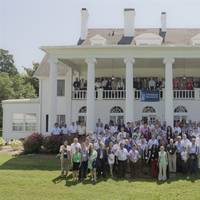
More than 200 experts from all around the world are expected to attend the global Simulation User Conference (SimUC 2016) “Simulation and Training without boundaries”, which will be hosted by Transas in Singapore on January 28, 2016. Transas SimUC is an international event that gathers Transas simulators users and Transas partners to exchange experience and ideas about maritime simulation and training. The Simulation and Training without boundaries theme will embrace trending subjects such as e-Navigation and cloud simulation…
SHIPFLOW Version 6 Released

SHIPFLOW 6 comes with a new module for computing ship motions in waves and the SHIPFLOW RANS solver is up to 10 times faster than its predecessor. SHIPFLOW MOTIONS is a new flow solver for computing ship motions in waves. It is a time accurate fully nonlinear boundary element method which can be used to compute ship motions and added resistance in regular and irregular waves as well as wave resistance, sinkage and trim in calm water. Typical results are time series and response amplitude operators.
Rolls-Royce Builds on Decade of Marine Research Collaboration
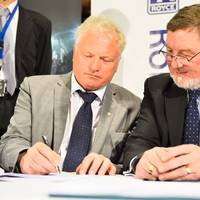
Ten years ago, Rolls-Royce partnered with the Norwegian University of Science and Technology (NTNU) and the Marintek Research Centre to create a unique research centre in Norway. The partners have renewed their agreement in Trondheim, Norway, pledging to continue to develop high-tech solutions for the maritime sector, focusing on improving ship performance in rough seas. The research centre follows a model that Rolls-Royce has developed with universities worldwide: the Rolls-Royce University Technology Centre (UTC).
A Closer Look at Dynamic Navigation for High Speed Craft
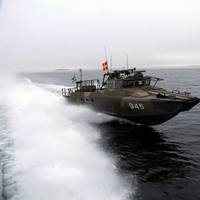
FRC International launched the innovative ‘DYNAV’ dynamic navigation system for high speed craft at Chalmers University of Technology in Gothenburg, Sweden in October. The DYNAV launch event enabled attendees from Scandinavia and Europe to come together with the objective of improving seafarer safety, operational performance and interoperability on fast craft. Professional sectors organizations included Search & Rescue, Navy, Special Forces, Coast Guard, law enforcement, maritime pilots, maritime legislators, training organisation and boat builders.
FRC International Launch Dynamic Navigation for High Speed Craft

FRC International is launching the innovative DYNAV (DYnamic NAVigation) system for high speed craft at Chalmers University of Technology in Gothenburg, Sweden, October 29-30. All individuals and organizations operating planing craft from SAR, navy, special forces, coast guard, law enforcement, renewables and the commercial sector are invited to attend the DYNAV launch event. This will be an excellent opportunity for international RIB & HSC professionals, boat builders, equipment manufacturers and industry to come together with the objective of improving sefarer safety on fast craft.
Swedish Icebreaker Tests Traffic Monitoring System
Maritime traffic in the Arctic is rising dramatically, leading to a greater need for safety and environmental protection. Consequently, as part of the icebreaker Oden’s Artic expedition, the Swedish Maritime Administration is testing a new tracking system for maritime traffic. The World Wildlife Fund, WWF, is also positive to the project. The Arctic is one of the world’s most environmentally sensitive areas, while also being one of the most difficult to protect against accidents. Thus, the need to support the maritime industry is crucial in guaranteeing safety for navigation and the environment. The Swedish Maritime Administration is now testing a new system for monitoring maritime traffic that will improve the potential for sea rescue, icebreaker assistance and environmental protection.
Virtual Towing Tank State-of-the-Art and Future Trends
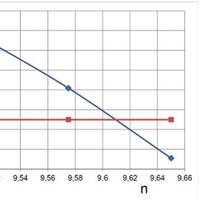
The use of computers to solve hydrodynamics problems in shipbuilding started in early days of scientific computing – as early as in aerodynamics and aerospace. Due to limited computing resources at that time, potential flow model was used in both aero- and hydrodynamics. However, while simulations based on Euler equations, Reynolds-averaged Navier-Stokes equations (RANSE) and most recently partially resolved Navier-Stokes equations (so-called “large-eddy” – LES – or “detached-eddy” – DES – simulations) have become established tools in aerodynamics…
Virtual Towing Tank State-of-the-Art and Future Trends
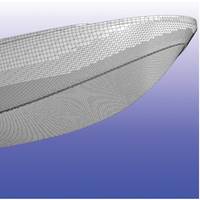
The use of computers to solve hydrodynamics problems in shipbuilding started in early days of scientific computing – as early as in aerodynamics and aerospace. Due to limited computing resources at that time, potential flow model was used in both aero- and hydrodynamics. However, while simulations based on Euler equations, Reynolds-averaged Navier-Stokes equations (RANSE) and most recently partially resolved Navier-Stokes equations (so-called “large-eddy” – LES – or “detached-eddy” – DES – simulations) have become established tools in aerodynamics…
First Woman MD in Ship Repair Industry
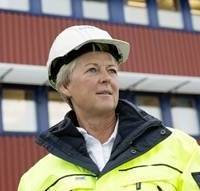
Ms Svenner has wide industrial experience as MD for several international companies, such as Stena Recycling and Atlas Copco. The current MD, Mr Jos Goris, is very pleased with the choice of his successor: “Monica has extensive experience in leadership and business development within a variety of organizations and industries, particularly within heavy industry. This means that she can bring new approaches and innovation, which is extremely positive for Damen Shiprepair Götaverken.
New MD for Damen Shiprepair Götaverken
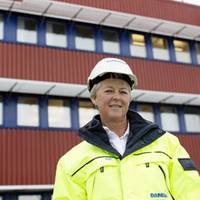
Damen Shiprepair Götaverken aims to be the best within the Nordic countries, according to its new strategy. As part of this focus, Ms Monica Svenner has been appointed as the new MD. Ms Svenner has wide industrial experience as MD for several international companies, such as Stena Recycling and Atlas Copco. She is the first woman to take an MD post within the ship repair industry and as a Gothenburger she has a burning ambition for her new company. The current MD, Mr Jos Goris…
Kongsberg, Vestfold University Simulator R&D
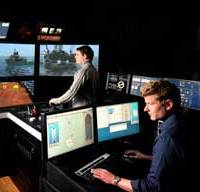
Kongsberg Maritime's simulation division and Vestfold University College has signed a framework agreement to further explore activities and projects of joint interest within research and development of maritime simulators from an innovation and human factor perspective. The agreement which was signed 22nd December 2010 comprises extensive R&D project plans and the use of an Interactive Simulator Laboratory (SIMSAM lab) at Vestfold University College, which will serve as a R&D facility. The agreement will include several R&D projects involving maritime simulators in different aspects.







